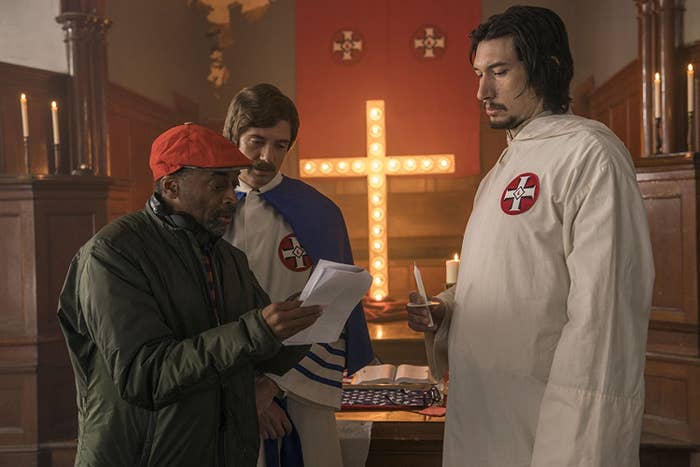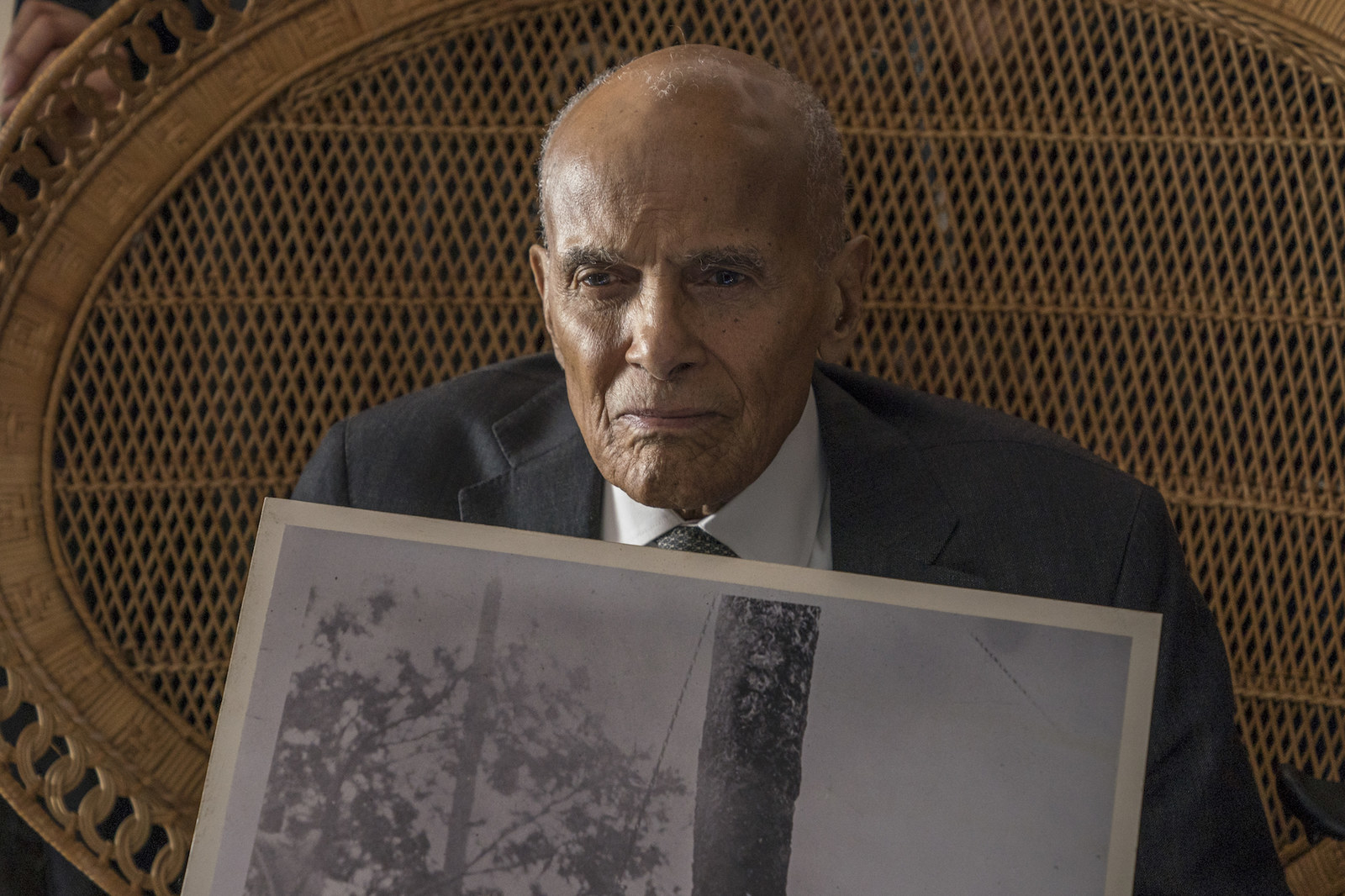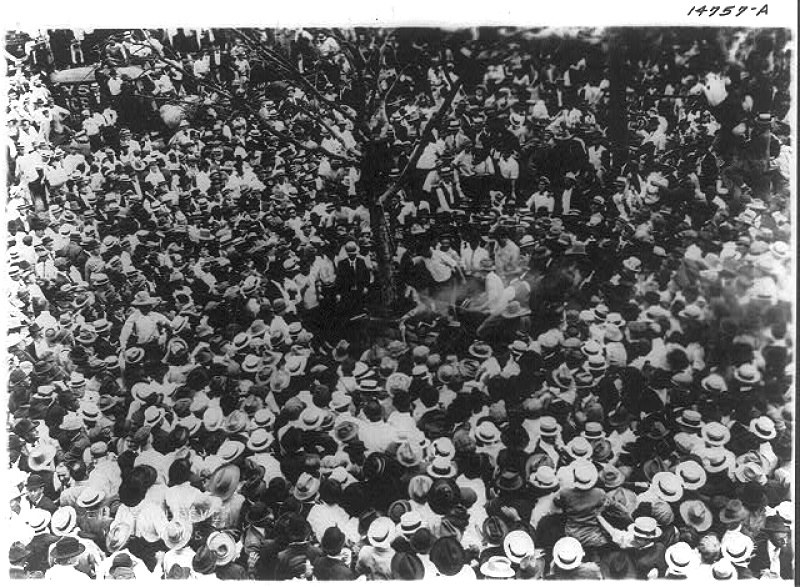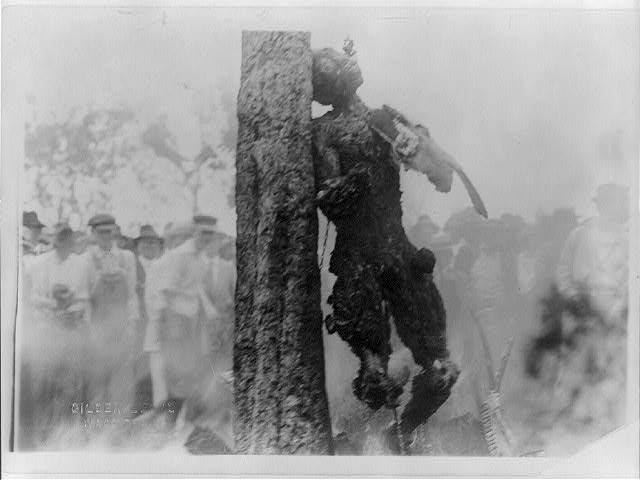
Part the power of the new Spike Lee film BlacKkKlansman is how much of its story is rooted in things that actually happened. In the late 1970s, a black detective in Colorado Springs named Ron Stallworth (played by John David Washington in the film) really did infiltrate the local chapter of the Ku Klux Klan by convincing its members over the phone that he was white. Stallworth actually sent a fellow white officer (played by Adam Driver) undercover as, basically, himself. Stallworth also had a rapport with KKK director David Duke (played by Topher Grace) on the phone, and ended up serving as Duke’s police security detail when Duke visited Colorado Springs. Lee even opens the film with a title card noting that BlacKkKlansman is “based upon some fo’ real, fo’ real sh*t.”
And yet one of the most powerful scenes in the film was wholly invented for the movie — although, true to that title card, it is still rooted in history, namely one of the most sickening and monstrous events of the Jim Crow South.
Early drafts of the BlacKkKlansman script included a scene in which the “white” Stallworth goes through a Klan induction ceremony. Lee and co-screenwriter Kevin Willmott (Chi-Raq) realized they wanted to counter the scene with “the details of what the Klan really is and what they really do,” as Willmott put it to BuzzFeed News.

Immediately, Willmott thought about the epidemic of lynching that pervaded the country in the late 19th and early 20th centuries. So he wrote a scene in which the Klan ceremony is intercut with a sequence in which a black activist — played in the film by civil rights icon Harry Belafonte — visits the local black student union, and shares his experience witnessing the real-life lynching of Jesse Washington.
On May 15, 1916, Washington, a 17-year-old farm worker, was convicted of the rape and murder of a white woman in Waco, Texas. After the verdict was rendered, he was pulled by a mob from the courthouse. A chain was wrapped around his neck. He was hit with bricks and knives, hung from a tree outside the Waco City Hall, castrated, repeatedly dangled over a fire, and ultimately burned alive. Some 15,000 people watched. The police did nothing to stop it.
“There were so many lynchings in the United States, and people will occasionally see a photograph,” said Willmott. “The Waco lynching is one of the most horrific in American history. … The Jesse Washington photograph is one you often see, but no one knows the story behind it. That was one of the reasons why we picked that one. It seemed to be a perfect fit.”
Willmott said that he wanted a “counternarrative” to the Klan’s narrative of white racial purity, to underline precisely where the rhetoric of white supremacy will lead. Washington’s lynching, he said, “really tells you what the end result is of everything they’re talking about. This is where that ends up, and this is what that really looks like.”
It’s also a moment when BlacKkKlansman broadens its scope to demonstrate how violent white supremacy isn’t limited to just the Klan. About half the population of Waco reportedly witnessed Washington’s lynching. “That was the pattern: The town knew about it, and, in fact, the town really embraced it,” said Willmott. “It became a public event.”

Modern audiences could look upon the widespread acceptance of lynching 100 years ago and wonder “How could they be like that?” For Willmott, the answer was simple: “It was very normal — at the time.”
Willmott also noted that the underlying impulses that allowed for lynchings to become so normalized are still very much alive today. Lee deliberately chose to release the film on the one-year anniversary of the racist marches in Charlottesville that resulted in one person’s death; he even ends the film with footage from those marches, including David Duke speaking in praise of President Trump.
“There’s lots of connections today in terms of how bizarre, insane things are being accepted,” Willmott said. “I think we’ll be looking back even in a few years, and we’ll be going, How could we have accepted this kind of behavior as something normal?”


